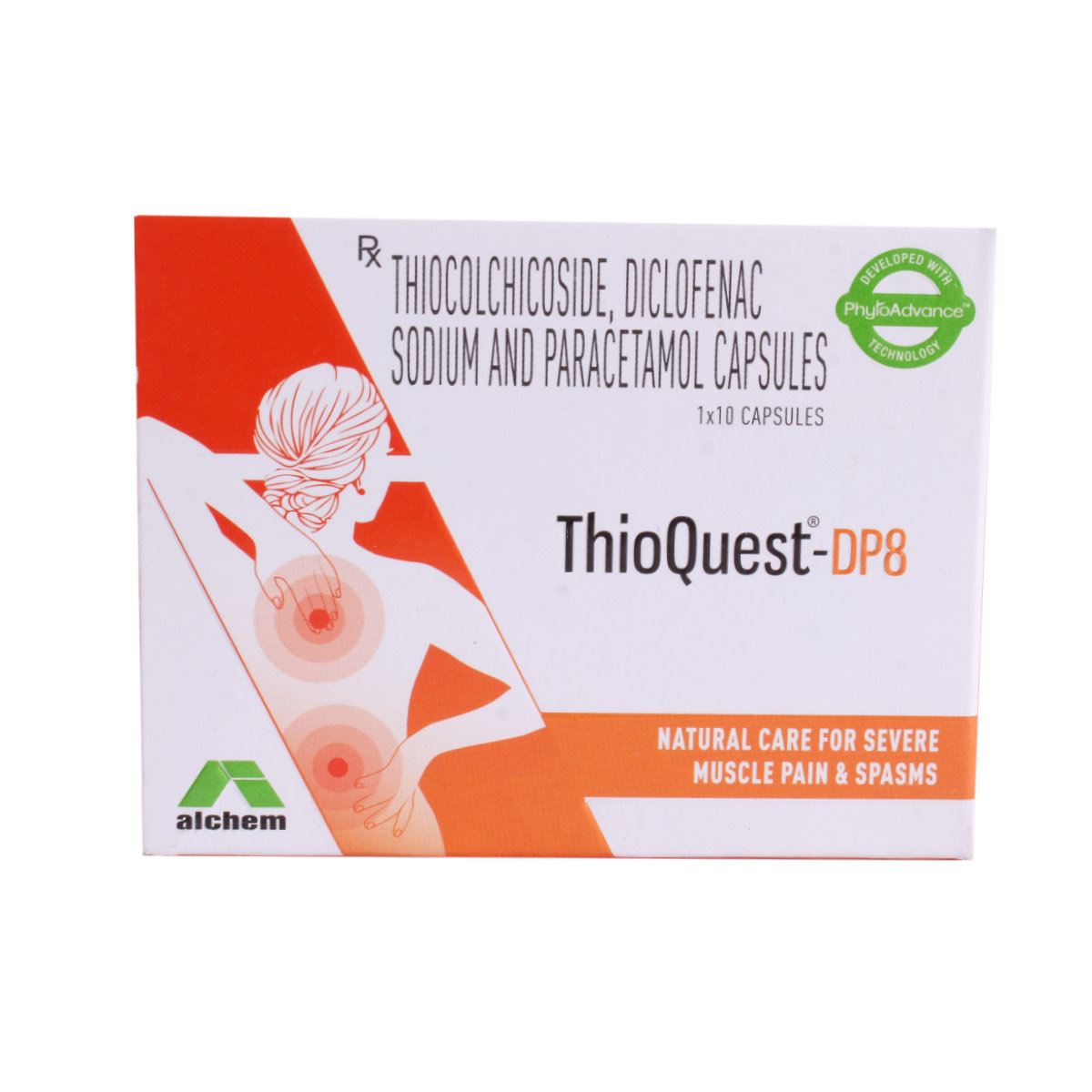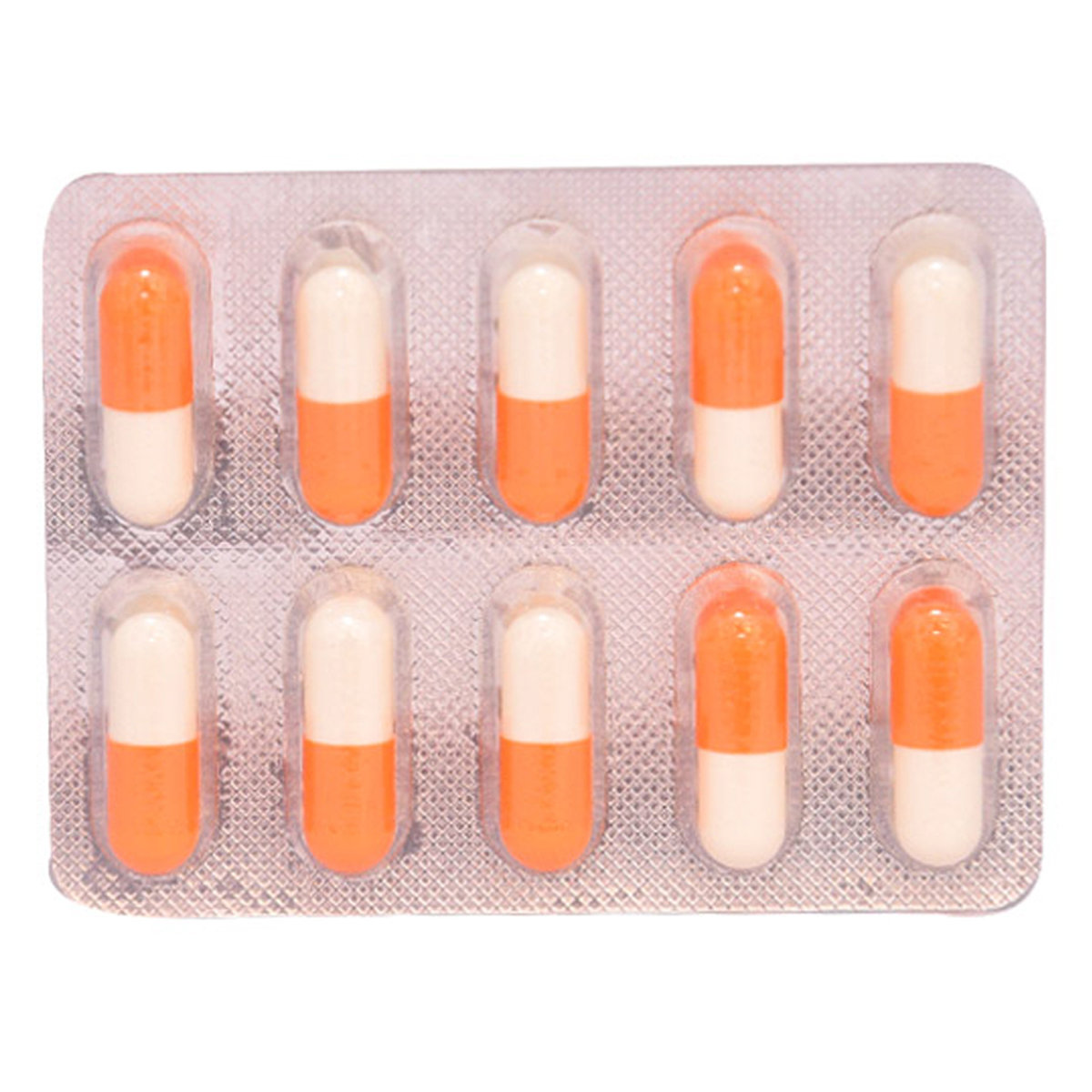Diclofenac+paracetamol+thiocolchicoside
About Diclofenac+paracetamol+thiocolchicoside
Diclofenac+paracetamol+thiocolchicoside belongs to the class of drugs called 'muscle relaxants'. Diclofenac+paracetamol+thiocolchicoside is used in the reduction of musculoskeletal pain due to tissue injury, resolution of post-surgery inflammation, and oedema (swollen tissue with fluid). Pain can be temporary (acute) or long-term (chronic) in nature. Musculoskeletal pain can be caused due to soft tissues (muscle, tendon, and ligaments) injury. Extreme tissue pain and inflammation caused due to sprains, strains or trauma or post-surgery may require a prolonged amount of time to heal.
Diclofenac+paracetamol+thiocolchicoside is a fixed-dose combination composed of three medicines namely: Diclofenac, Paracetamol, and thiocolchicoside. Diclofenac works by blocking the action of a chemical messenger known as cyclo-oxygenase (COX) which causes pain and swelling at the injured or damaged tissue site. Paracetamol acts as a mild analgesic (mild pain reducer) and antipyretic (fever reducer) which enhances the pain relief action of diclofenac. The third medicine i.e. thiocolchicoside is a muscle relaxant, helps by blocking nerve impulses or pain sensations sent by the brain and causes relaxation of muscles.
Diclofenac+paracetamol+thiocolchicoside can be taken with or after the meal. To avoid stomach upset Diclofenac+paracetamol+thiocolchicoside can be taken with food or milk. It should be swallowed whole with a glass of water. Do not crush or chew the tablets. Do not take Diclofenac+paracetamol+thiocolchicoside if your pain lasts for more than ten days or fever lasting for more than three days. Do not take a double dose if you missed one dose. Like all medicines, Diclofenac+paracetamol+thiocolchicoside may cause side effects like nausea, vomiting, stomach pain, heartburn, diarrhoea, loss of appetite. If these side effects persist stop taking Diclofenac+paracetamol+thiocolchicoside and consult your doctor immediately.
Do not take Diclofenac+paracetamol+thiocolchicoside if you are allergic to Diclofenac+paracetamol+thiocolchicoside. It is not recommended for use in children, people with liver disease, heart disease, or gastric ulcers/bleeding problems. Diclofenac+paracetamol+thiocolchicoside may be associated with a small increase in the risk of heart attack (myocardial infarction). Avoid consumption of alcohol as it may damage your liver and cause even more side effects from taking this drug. Consult your doctor if your symptoms of pain, inflammation, and fever do not disappear even after ten days.
Uses of Diclofenac+paracetamol+thiocolchicoside
Medicinal Benefits
Diclofenac+paracetamol+thiocolchicoside is a fixed-dose combination composed of three medicines namely: Diclofenac, Paracetamol, and thiocolchicoside belong to the class of drugs called 'muscle relaxants'. Diclofenac+paracetamol+thiocolchicoside is used in the reduction of musculoskeletal pain due to tissue injury, resolution of post-surgery inflammation, and oedema (swollen tissue with fluid). Diclofenac works by blocking the action of a chemical messenger known as cyclo-oxygenase (COX) which causes pain and swelling at the injured or damaged tissue site. Paracetamol acts as a mild analgesic (mild pain reducer) and antipyretic (fever reducer) which enhances the pain relief action of diclofenac. The third medicine i.e. thiocolchicoside is a muscle relaxant, helps by blocking nerve impulses or pain sensations sent by the brain and causes relaxation of muscles.
Directions for Use
Storage
Side Effects of Diclofenac+paracetamol+thiocolchicoside
- Nausea
- Vomiting
- Stomach pain
- Heartburn
- Diarrhoea
- Loss of appetite
Drug Warnings
Do not take Diclofenac+paracetamol+thiocolchicoside if you are allergic to Diclofenac+paracetamol+thiocolchicoside. It is not recommended for use in children, people with liver disease, heart disease, or gastric ulcers/bleeding problems. Diclofenac+paracetamol+thiocolchicoside may be associated with a small increase in the risk of heart attack (myocardial infarction). Avoid consumption of alcohol as it may damage your liver and cause even more side effects from taking this drug. Consult your doctor if your symptoms of pain, inflammation, and fever do not disappear even after ten days. Intake of Diclofenac+paracetamol+thiocolchicoside should be avoided in cardiovascular disease (like coronary heart disease), chronic malnutrition, asthma. Contact your doctor if you have signs of liver disease like feeling exhausted, dark urine, not feeling hungry, stomach pain or upset, light-coloured stools, or yellow skin/eyes. After taking if you have possible allergic symptoms like difficulty in breathing, difficulty in swallowing, lips/face/throat swelling, chest tightness, or skin rash, contact the doctor immediately.
Drug Interactions
Drug Interaction: Diclofenac+paracetamol+thiocolchicoside is shown to interact with various drugs. Some of them include pain killers (naproxen, aspirin, ibuprofen, tramadol, hydrocodone, oxycodone), blood pressure-related drug (lisinopril, propranolol, hydrochlorothiazide), blood thinner (warfarin), anti-depressant (duloxetine, lithium), acidity lowering drug (cimetidine), and steroids (prednisone), antiepileptics (carbamazepine, phenytoin) anti-diabetics (glimepiride). These drugs may affect the working of Diclofenac+paracetamol+thiocolchicoside and may alter its efficacy.
Drug-Food Interaction: Excessive intake of caffeine-containing food or drinks like coffee, tea, chocolate, and some fizzy drinks, alcohol should be avoided while taking Diclofenac+paracetamol+thiocolchicoside. Taking together may lead to drowsiness and dizziness and sleepiness.
Drug-Disease Interaction: Diclofenac+paracetamol+thiocolchicoside should not recommend for people having bleeding disorders, like haemophilia, von Willebrand disease, or low blood platelets. Besides this, it should not be given in the condition of liver disease like jaundice, alcoholism, chronic malnutrition, and asthma
Drug-Drug Interactions Checker List:
Safety Advice

Alcohol
cautionDiclofenac+paracetamol+thiocolchicoside should be used caution with alcohol, because it may cause unpleasant effects. So please consult your doctor before taking Diclofenac+paracetamol+thiocolchicoside.

Pregnancy
cautionUse of this Diclofenac+paracetamol+thiocolchicoside may cause blurred vision or dizziness in some patients. It is advised that you do not perform any activities such as driving a vehicle or operating machinery if you experience any of these symptoms during treatment with this medicine.

Breast Feeding
cautionDiclofenac+paracetamol+thiocolchicoside is not recommended for use in breastfeeding women unless necessary. The risks and benefits should be discussed with the doctor before taking this medicine.

Driving
cautionThe use of this medicine may cause blurred vision or dizziness in some patients. It is advised that you do not perform any activities such as driving a vehicle or operating machinery if you experience any of these symptoms during treatment with this medicine.

Liver
cautionDiclofenac+paracetamol+thiocolchicoside should be used with extreme caution in patients suffering from liver function impairment or active liver diseases due to the increased risk of severe adverse effects. Close monitoring of liver function is necessary while receiving this medicine. Appropriate dose adjustments or replacement with a suitable alternative may be required in some cases based on the clinical condition.

Kidney
cautionDiclofenac+paracetamol+thiocolchicoside should be used with extreme caution in patients suffering from malnourishment due to the increased risk of severe adverse effects. Appropriate dose adjustments or replacement with a suitable alternative may be required in some cases based on the clinical condition.

Children
cautionDiclofenac+paracetamol+thiocolchicoside used with caution in below 12 years of age. Please consult your doctor before taking Diclofenac+paracetamol+thiocolchicoside.
Habit Forming
Diet & Lifestyle Advise
- Diclofenac+paracetamol+thiocolchicoside is commonly prescribed for relieving pain in both acute and chronic conditions and in cases of fever. Do not take the drug beyond its suggested dose and frequency.
- Avoid driving while consuming Diclofenac+paracetamol+thiocolchicoside as it can cause dizziness in some individuals and hamper your focus and reflexes.
- Avoid concomitant consumption of drugs containing the same chemicals as Diclofenac+paracetamol+thiocolchicoside as it can lead to overdosage and unwanted side effects.
- Immediately consult your doctor in case of persistent side effects like stomach pain on the consumption of Diclofenac+paracetamol+thiocolchicoside.
- Avoid consuming alcohol while you are on Diclofenac+paracetamol+thiocolchicoside.
Special Advise
- Diclofenac+paracetamol+thiocolchicoside is prescribed for relief from muscle pain and spasms.
- It can cause drowsiness and hence activities involving focus and attention like driving must be avoided while on this medication.
- Concomitant usage of alcohol with this medicine increases the risk of damage to the liver and other side effects and hence alcohol consumption should be avoided while consuming this medication
- Avoid simultaneous consumption of other painkillers or cough and cold medicines with this Diclofenac+paracetamol+thiocolchicoside as it may lead to overdose.
Patients Concern
Disease/Condition Glossary
Muscular Pain: Musculoskeletal pain is generally caused by disorders of bones, joints, muscles, tendons, ligaments, or a combination. Injuries (mostly sports-related injuries) are the most common cause of musculoskeletal pain. Muscle pain (myalgia) can be caused due to injury, infection, loss of blood flow to the muscle, infection, or a tumour. Extreme tissue pain and inflammation caused due to sprains, strains, or trauma, or post-surgery may require a prolonged amount of time to heal.
FAQs
Diclofenac+paracetamol+thiocolchicoside is a fixed-dose combination composed of three medicines namely: Diclofenac, Paracetamol, and thiocolchicoside. Diclofenac works by blocking the action of a chemical messenger known as cyclo-oxygenase (COX) which causes pain and swelling at the injured or damaged tissue site. Paracetamol acts as a mild analgesic (mild pain reducer) and antipyretic (fever reducer) which enhances the pain relief action of diclofenac. The third medicine i.e. thiocolchicoside is a muscle relaxant, helps by blocking nerve impulses or pain sensations sent by the brain and causes relaxation of muscles.
Diclofenac+paracetamol+thiocolchicoside may cause side effects like nausea, vomiting, stomach pain, heartburn, diarrhoea, loss of appetite. If these side effects persist stop taking Diclofenac+paracetamol+thiocolchicoside and consult your doctor immediately.
Diclofenac+paracetamol+thiocolchicoside should not be stopped suddenly. Inform your doctor before taking Diclofenac+paracetamol+thiocolchicoside.
Diclofenac+paracetamol+thiocolchicoside should be used with extreme caution in patients suffering from malnourishment due to the increased risk of severe adverse effects. Appropriate dose adjustments or replacement with a suitable alternative may be required in some cases based on the clinical condition.





